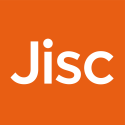The effects of plyometric and resistance training on linear sprinting speed and repeated sprinting ability of youth players in Ethiopia
Resumen
The study investigated the effects of resistance training, plyometric training, and resistance and plyometric training combined on linear-speed and repeated sprinting ability (RSA) of youth soccer players. The authors used a randomized block design, randomly assigning thirty-six male soccer players (aged 18 ± 1.212 years, with a body weight of 57 ± 3.580 kg) to one of three groups: plyometric exercise, combined plyometric and resistance exercise, and resistance exercise. The authors analyzed each group's performance gains by comparing the pretest and post-test performance scores using paired sample t-test. All three training groups achieved significant performance gains in linear speed and repeated sprinting ability (RSA) (p<0.05). The plyometric and combined groups achieved higher linear-speed performance than the resistance training group (p<0.05). However, there was no significant difference among the three groups in repeated-sprinting-ability scores (p>0.05). In conclusion, plyometric and combined exercises are important training methods to impact speed for soccer players. Thus, when the focus is on soccer-specific linear speed and repeated sprinting ability, coaches and their training programs should emphasize methods that incorporate appropriate plyometrics and resistance training. This fitness-oriented training has to be considered in line with the technical and tactical trainings as they are helpful to get the most from the players’ technical-tactical qualities.
Descargas
-
Resumen364
-
PDF 272
Citas
Alghannam, A. F. (2013). Physiology of soccer: The role of nutrition in performance. Journal of Novel Physiotherapy, 3, 1-5. http://dx.doi.org/10.4172/2165-7025.S3-003
Aughey, R. J., Elias, G., Esmaeili, A., Lazarus, B., & Stewart, A. M. (2016). Does the recent internal load and strain on players affect match outcome in elite Australian football? Journal of Science and Medicine in Sport, 19(2), 182-186. https://doi.org/10.1016/j.jsams.2015.02.005
Bangsbo, J., Mohr, M., & Krustrup, P. (2006). Physical and metabolic demands of training and match-play in the elite football player. Journal of Sports Sciences, 24(7), 665–674. https://doi.org/10.1080/02640410500482529
Barnes, C., Archer, D. T., Hogg, B., Bush, M., & Bradley, P. S. (2014). The evolution of physical and technical performance parameters in the English Premier League. International Journal of Sports Medicine, 35(13), 1095–1100. https://doi.org/10.1055/s-0034-1375695
Behm, D. G., Young, J. D., Whitten, J. H. D., Reid, J. C., Quigley, P. J., Low, J., Li, Y., Lima, C. D., Hodgson, D. D., Chaouachi, A., Prieske, O., & Granacher, U. (2017). Effectiveness of Traditional Strength vs. Power Training on Muscle Strength, Power and Speed with Youth: A Systematic Review and Meta-Analysis. Frontiers in Physiology, 8, 1-37. https://doi.org/10.3389/fphys.2017.00423
Blazevich, A. J., & Jenkins, D. G. (2002). Effect of the movement speed of resistance training exercises on sprint and strength performance in concurrently training elite junior sprinters. Journal of Sports Sciences, 20(12), 981–990. https://doi.org/10.1080/026404102321011742
Bompa, T., & Haff, G. G. (2009). Periodization: Theory and methodology of training (5th ed.). Human Kinetics.
Bradley, P. S., Carling, C., Gomez Diaz, A., Hood, P., Barnes, C., Ade, J., Boddy, M., Krustrup, P., & Mohr, M. (2013). Match performance and physical capacity of players in the top three competitive standards of English professional soccer. Human Movement Science, 32(4), 808–821. https://doi.org/10.1016/j.humov.2013.06.002
Cipryan, L., Tschakert, G., & Hofmann, P. (2017). Acute and Post-Exercise Physiological Responses to High-Intensity Interval Training in Endurance and Sprint Athletes. Journal of Sports Science & Medicine, 16(2), 219–229.
Duarte, R., Araújo, D., Correia, V., & Davids, K. (2012). Sports teams as superorganisms: implications of sociobiological models of behaviour for research and practice in team sports performance analysis. Sports Medicine, 42(8), 633–642. https://doi.org/10.2165/11632450-000000000-00000
Eniseler, N., Şahan, Ç., Özcan, I., & Dinler, K. (2017). High-Intensity Small-Sided Games versus Repeated Sprint Training in Junior Soccer Players. Journal of Human Kinetics, 60, 101–111. https://doi.org/10.1515/hukin-2017-0104
Faude, O., Koch, T., & Meyer, T. (2012). Straight sprinting is the most frequent action in goal situations in professional football. Journal of Sports Sciences, 30(7), 625–631. https://doi.org/10.1080/02640414.2012.665940
Gabbett T. J. (2016). The training-injury prevention paradox: should athletes be training smarter and harder?. British Journal of Sports Medicine, 50(5), 273–280. https://doi.org/10.1136/bjsports-2015-095788
Girard, O., Mendez-Villanueva, A., & Bishop, D. (2011). Repeated-Sprint Ability – Part I factors contributing to fatigue. Sports Medicine, 41(8), 673–694.
Hammami, M., Negra, Y., Aouadi, R., Shephard, R. J., & Chelly, M. S. (2016). Effects of an In-season Plyometric Training Program on Repeated Change of Direction and Sprint Performance in the Junior Soccer Player. Journal of Strength and Conditioning Research, 30(12), 3312–3320. https://doi.org/10.1519/JSC.0000000000001470
Haugen, T., Tonnessen, E., Hisdal, J., & Seiler, S. (2014). The role and development of sprinting speed in soccer. Brief review. International Journal of Sports Physiology and Performance, 9(3), 432-441.
Kenney, W. L., Wilmore, J. H., & Costill, D. L. (2015). Physiology of sport and exercise (6th ed.). Human Kinetics.
López-Segovia, M., Pareja-Blanco, F., Jiménez-Reyes, P., & González-Badillo, J. J. (2015). Determinant factors of repeat sprint sequences in young soccer players. International Journal of Sports Medicine, 36(2), 130–136. https://doi.org/10.1055/s-0034-1385880
Nédélec, M., Halson, S., Abaidia, A. E., Ahmaidi, S., & Dupont, G. (2015). Stress, Sleep and Recovery in Elite Soccer: A Critical Review of the Literature. Sports Medicine, 45(10), 1387–1400.
Ozbar, N., Ates, S., & Agopyan, A. (2014). The effect of 8-week plyometric training on leg power, jump and sprint performance in female soccer players. Journal of Strength and Conditioning Research, 28(10), 2888–2894. https://doi.org/10.1519/jsc.0000000000000541
Ramírez-Campillo, R., Gallardo, F., Henriquez-Olguín, C., Meylan, C. M., Martínez, C., Álvarez, C., Caniuqueo, A., Cadore, E. L., & Izquierdo, M. (2015). Effect of Vertical, Horizontal, and Combined Plyometric Training on Explosive, Balance, and Endurance Performance of Young Soccer Players. Journal of Strength and Conditioning Research, 29(7), 1784–1795. https://doi.org/10.1519/JSC.0000000000000827
Ramirez-Campillo, R., García-Pinillos, F., García-Ramos, A., Yanci, J., Gentil, P., Chaabene, H., & Granacher, U. (2018). Effects of Different Plyometric Training Frequencies on Components of Physical Fitness in Amateur Female Soccer Players. Frontiers in Physiology, 9, 1-11. https://doi.org/10.3389/fphys.2018.00934
Ramírez-Campillo, R., González-Jurado, J. A., Martínez, C., Nakamura, F. Y., Peñailillo, L., Meylan, C. M., Caniuqueo, A., Cañas-Jamet, R., Moran, J., Alonso-Martínez, A. M., & Izquierdo, M. (2016). Effects of plyometric training and creatine supplementation on maximal-intensity exercise and endurance in female soccer players. Journal of Science and Medicine in Sport, 19(8), 682–687. https://doi.org/10.1016/j.jsams.2015.10.005
Ramírez-Campillo, R., Vergara-Pedreros, M., Henríquez-Olguín, C., Martínez-Salazar, C., Alvarez, C., Nakamura, F. Y., De La Fuente, C. I., Caniuqueo, A., Alonso-Martinez, A. M., & Izquierdo, M. (2016). Effects of plyometric training on maximal-intensity exercise and endurance in male and female soccer players. Journal of Sports Sciences, 34(8), 687–693. https://doi.org/10.1080/02640414.2015.1068439
Schimpchen, J., Skorski, S., Nopp, S., & Meyer, T. (2015). Are “classical” tests of repeated-sprint ability in football externally valid? A new approach to determine in-game sprinting behaviour in elite football players. Journal of Sports Sciences, 34(6), 519–526.
Ullrich, B., Pelzer, T., & Pfeiffer, M. (2018). Neuromuscular Effects to 6 Weeks of Loaded Countermovement Jumping With Traditional and Daily Undulating Periodization. Journal of Strength and Conditioning Research, 32(3), 660–674. https://doi.org/10.1519/JSC.0000000000002290
Las obras que se publican en esta revista están sujetas a los siguientes términos:
1. El Servicio de Publicaciones de la Universidad de Murcia (la editorial) conserva los derechos patrimoniales (copyright) de las obras publicadas, y favorece y permite la reutilización de las mismas bajo la licencia de uso indicada en el punto 2.
© Servicio de Publicaciones, Universidad de Murcia, 2013
2. Las obras se publican en la edición electrónica de la revista bajo una licencia Creative Commons Reconocimiento-NoComercial-SinObraDerivada 3.0 España (texto legal). Se pueden copiar, usar, difundir, transmitir y exponer públicamente, siempre que: i) se cite la autoría y la fuente original de su publicación (revista, editorial y URL de la obra); ii) no se usen para fines comerciales; iii) se mencione la existencia y especificaciones de esta licencia de uso.
3. Condiciones de auto-archivo. Se permite y se anima a los autores a difundir electrónicamente las versiones pre-print (versión antes de ser evaluada) y/o post-print (versión evaluada y aceptada para su publicación) de sus obras antes de su publicación, ya que favorece su circulación y difusión más temprana y con ello un posible aumento en su citación y alcance entre la comunidad académica.



















